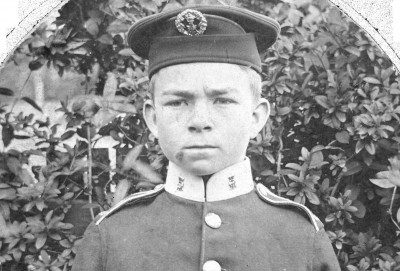
Undress caps for off-duty, walking out and work wear had long been used as a substitute for the often cumbersome and impractical ‘dress’ shakos and helmets used on parade and in battle.
The term ‘forage cap’ reflects their early use by foraging cavalry units, many of which adopted a round, peakless pill-box shaped cap held by a leather chin-strap and typically worn at a rakish angle.
For the infantry, early use of forage caps, often knitted or home-made from remnants of discarded uniforms, seems to have been unofficial, or regimentally sanctioned, but from 1811 the authorities began to impose a uniformity of style.
Several patterns, some based on Scottish antecedents, were introduced through the nineteenth century, but in 1902 a new form, named after the then Secretary of State for War, St. John Brodrick, was introduced.

This feature might have been expected to appeal in particular to such regiments as the Green Howards, but the style proved universally unpopular. The pattern was condemned by the War Office as early as September 1904, and was phased out by 1907, except for the Royal Marines.
The issue of this cap represents an interesting instance of how authorities can make an unpopular decision, and of how the quiet opposition of those on whom it is inflicted can promote change. Ironically, the period of issue of this cap coincided with the similarly short-lived issue of a particularly attractive version of the regimental badge, on which the familiar features of interlaced ‘A’ and Danish cross are surrounded by a wreath of roses.
Precise reasons for the unpopularity of the Brodrick cap are difficult to identify; perhaps its similarity to the ‘feldmutze’ of the German infantry, used through the nineteenth and early twentieth centuries, in a period of increasing international tension, could be a factor.
Its rarity is probably due to its short duration as a uniform item, but anecdotally it is claimed that many were gleefully burned by their unappreciative owners when replaced by the dark blue peaked forage cap, which, with various regimental distinctions, is still in use today.
